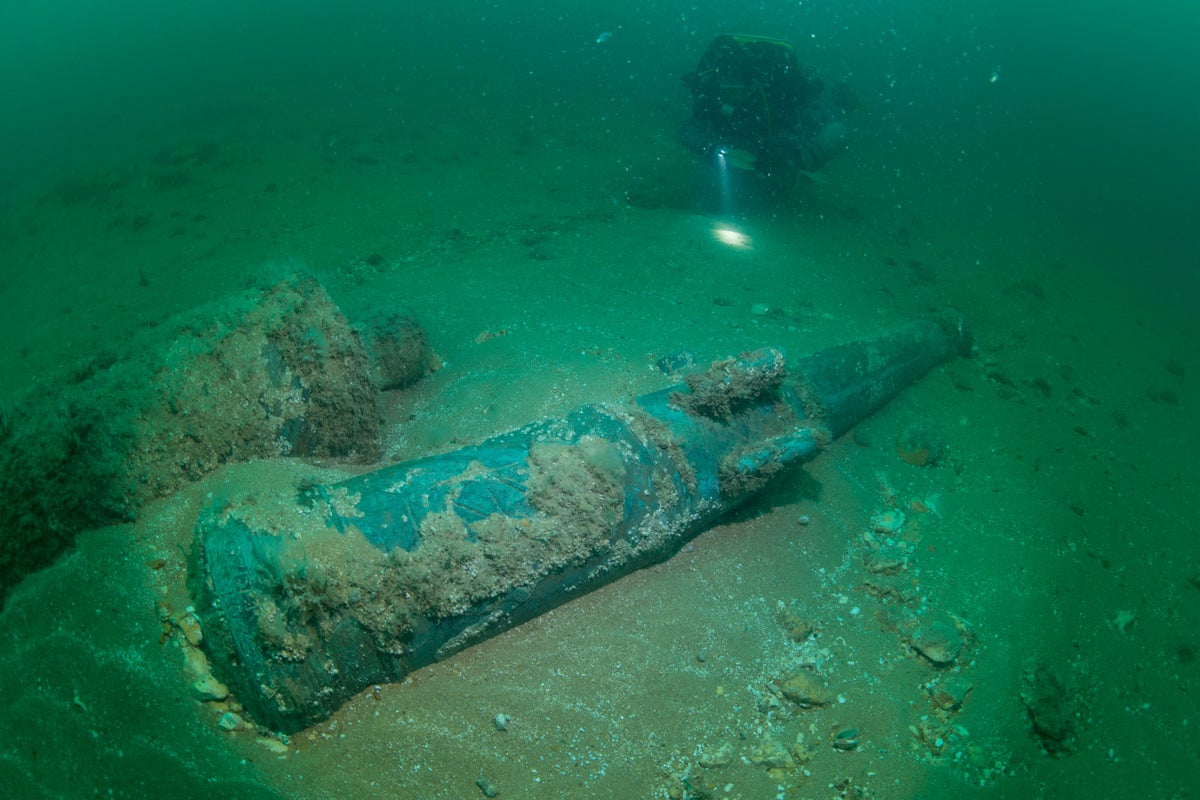For free real time breaking news alerts sent straight to your inbox sign up to our breaking news emails
Sign up to our free breaking news emails
Scientists have solved the mystery of the identity of a 17th century Dutch warship wrecked off the coast of England while carrying slabs of fine Italian marble.
The unknown Protected Wreck off the coast of Sussex has been identified as the Dutch warship Klein Hollandia.
Built in 1656 and owned by the Admiralty of Rotterdam, the ship was involved in all major battles in the second Anglo-Dutch war (1665-1667).
The wreck, which lies on the seabed 32 metres under the surface, was until now known as the “Unknown Wreck off Eastbourne”.
The ship sank in 1672 and was discovered in 2019.
Recommended
- Charity boss speaks out over ‘traumatic’ encounter with royal aide
- Ukraine war’s heaviest fight rages in east – follow live
It was considered so important that it was granted the highest level of protection in the same year, under the Protection of Wrecks Act 1973.
Over the past year, specialists from Historic England, Cultural Heritage Agency of the Netherlands (RCE) and the Nautical Archaeology Society have been working on identifying the ship.
Uncovering the story of the warship Klein Hollandia opens up another fascinating chapter in the already rich, shared maritime history between the UK and the Netherlands
Duncan Wilson, Historic England
They used evidence gathered from the wreck by a team of professional and volunteer divers, as well as archival research and tree ring analysis of the wood samples.
Heritage minister Lord Parkinson said: “The identification of the Klein Hollandia offers a glimpse back into the 17th century, giving us a chance to learn more about the maritime history of this period and to uncover treasures which have been underwater for hundreds of years.
“I am very pleased that, thanks to this partnership between the UK and the Netherlands, we have been able to solve some of the mysteries linked to this wreck – and to protect it for future generations to continue to research.”
Duncan Wilson, chief executive of Historic England, said: “We’re delighted that Historic England’s material scientists have played a key part in solving the mystery of this shipwreck’s previously hidden identity.
“Uncovering the story of the warship Klein Hollandia opens up another fascinating chapter in the already rich, shared maritime history between the UK and the Netherlands.”
The experts say the wreck’s condition is remarkable and could offer a wealth of information about how 17th century Dutch ships were built and the activities of the warship during its final voyage.
A large part of the wooden hull, cannons, Italian marble tiles and pieces of Italian pottery were among the material found on the seabed.
The marble tiles came from the Apuan Alps quarries close to Carrara in Italy and were conserved by Historic England archaeological conservators before the investigations started.
The tiles were bound for the Netherlands and would have been used to build high-status homes.
The wreck was discovered by Eastbourne dive operator David Ronnan and reported to Historic England.
Mr Ronnan and Mark Beattie-Edwards are the licensees and have been investigating the wreck since its discovery.
Mr Beattie-Edwards, chief executive of the Nautical Archaeology Society, said: “From our very first dive on the wreck, back in April 2019, we have been fascinated by the range of material on the seabed.
Recommended
- Fire at Edinburgh’s former Jenners building sends plumes of smoke into air
- Firefighters called to blaze at heritage-listed London church
- Julian Sands: High winds again ground helicopters in search for missing actor
“The impressive amount of wooden hull structure, the ship’s cannons, the beautifully cut marble tiles, as well as the pottery finds, all point towards this being a Dutch ship from the late 17th century coming back from Italy.
“Now, after four years of investigation and research, we can confidently identify the vessel.”
✕
Subscribe to Independent Premium to bookmark this article
Want to bookmark your favourite articles and stories to read or reference later? Start your Independent Premium subscription today.
SubscribeAlready subscribed? Log in
Popular videos
{{/link}}

